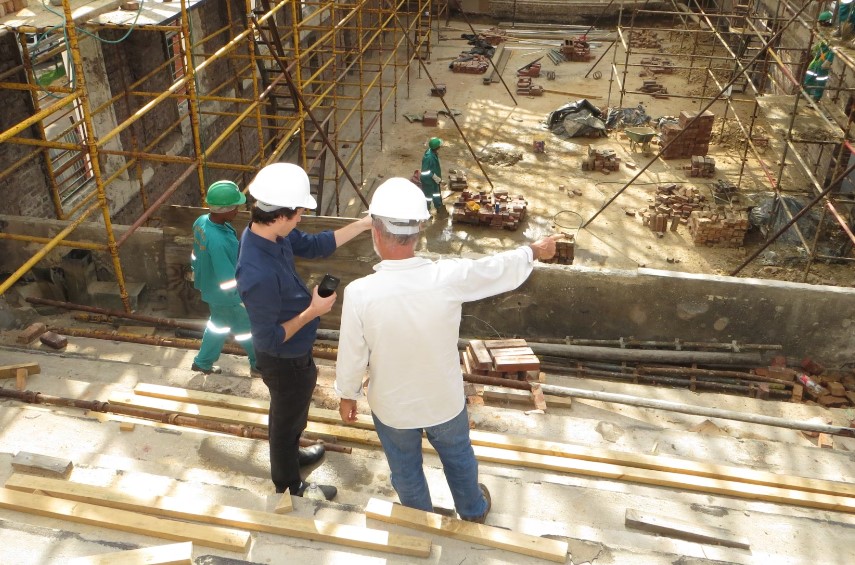Safety in construction goes way beyond regulation. It’s a cornerstone of the industry’s integrity and success. In an industry responsible for nearly 20% of all job-related fatalities in the US (according to OSHA), the importance of safety simply cannot be overstated.
The past few years have witnessed big improvements in how safety is managed on construction sites, driven by technological innovation, updated regulations, and a cultural shift towards prioritizing worker welfare. These enhancements aim to minimize the risk of accidents and injuries and contribute to the efficiency and reputation of construction operations. Let’s take a closer look.
Technological Advancements
Technological advancements have significantly enhanced safety in the construction industry in recent years. Wearable technology (such as smart helmets equipped with sensors) has played a big role in monitoring workers’ health metrics and environmental conditions. It helped reduce accidents related to overheating and exhaustion.
Drones have also transformed site safety by conducting aerial inspections and identifying potential hazards without risking human life, which has been shown to reduce workplace injuries by up to 91% according to industry reports. The introduction of robotics in performing high-risk tasks like welding and material handling minimizes human exposure to hazardous conditions, but it can also increase precision and efficiency on construction sites in some cases.
Improved Training Techniques
The implementation of advanced training techniques, particularly Virtual Reality and Augmented Reality, has revolutionized safety training within the construction industry. VR and AR allow workers to experience and react to high-risk scenarios in a controlled, immersive environment, which has proven to enhance understanding and retention of safety protocols. Some studies show that VR training can improve retention rates by up to 75%.
The shift towards online training modules facilitates continuous education and compliance, as these platforms provide up-to-date training that can be accessed remotely, ensuring all employees are trained on the latest safety standards regardless of location. These modern training tools can prepare workers more effectively and also align with the industry’s need for flexible, scalable training solutions.
Enhanced Safety Regulations and Standards
Safety regulations and standards in the construction industry have seen significant updates in recent years. This is mostly driven by technological integration and increased safety data availability. Revisions to the Occupational Safety and Health Administration (OSHA) standards have led to stricter compliance requirements, and this is no surprise, considering that the construction industry accounts for approximately 20% of all private industry fatalities in the US.
With some injury claims being straightforward and easily resolved by filing a report and working through the compensation process already in place, others can get complicated fast if the worker’s claim is denied, says one personal injury attorney from Indianapolis. The enhanced rules around fall protection aim to decrease fall-related accidents, which have historically been the leading cause of fatalities in construction.
Future legislative efforts are anticipated to focus on increasing the adoption of digital safety technologies and improving the reporting mechanisms for accidents and near-misses. Proposed changes aim to mandate more comprehensive data collection on job sites, which could lead to a 20% reduction in incident rates by improving hazard recognition and preventive measures based on trend analysis.
Cultural Shifts in Safety Awareness
The construction industry has experienced a profound cultural shift towards prioritizing safety. This is largely influenced by both internal policy changes and external pressures for transparency. A safety-first culture is now prevalent, with many companies implementing reward systems that recognize and incentivize workers for safe practices. These programs have shown effectiveness, with some reports indicating a reduction in incident rates by as much as 30% in organizations that adopt comprehensive safety recognition programs.
The push for greater transparency in reporting safety incidents has also led to a more open dialogue about risks and preventative strategies. Companies that have adopted transparent reporting practices have seen a 15% improvement in safety outcomes, as these practices foster a more engaged and informed workforce.
Materials and Equipment Innovations
Innovations in materials and equipment have significantly contributed to enhancing safety on construction sites. The development of advanced materials, such as high-strength, lightweight composites and non-slip surfaces, has directly reduced risks associated with handling heavy loads and working in slippery conditions. The integration of these new materials has been credited with reducing related injuries by approximately 25% in the past five years.
The introduction of smarter construction equipment with built-in safety features, such as machinery with automatic shut-off capabilities and enhanced ergonomic designs, has further minimized the likelihood of operator error and fatigue. Equipment manufacturers report that these improvements have decreased the rate of equipment-related accidents by up to 20% and also improved overall job site efficiency.
Future Trends
The integration of AI and machine learning in construction safety management is most likely going to completely reshape safety practices in construction. Predictive analytics (derived from AI algorithms), especially when integrated with field safety software, can analyze vast amounts of data from construction sites to forecast potential hazards and suggest preventive measures, potentially reducing incident rates by as much as 40% according to industry projections.
The ongoing development and integration of safety technologies into personal protective equipment and site management systems are expected to enhance real-time hazard detection and response capabilities. Smart PPE equipped with environmental sensors and connectivity features could become standard, offering workers and supervisors immediate alerts to unsafe conditions.
Final Words
How much safer can construction sites become with ongoing technological and cultural advancements? As we have seen, significant strides in safety measures have already reduced workplace accidents and fatalities. Industry reports show a 30% reduction in serious injuries over the last decade alone.
This trend is set to continue as wearable technologies, AI-enhanced safety systems, and a stronger regulatory framework become more integrated into daily operations. The commitment to adopting these innovations exemplifies the industry’s dedication to safety, but it also shows its capacity to evolve. The future of construction safety looks promising, with smart technology and proactive culture leading the way.


